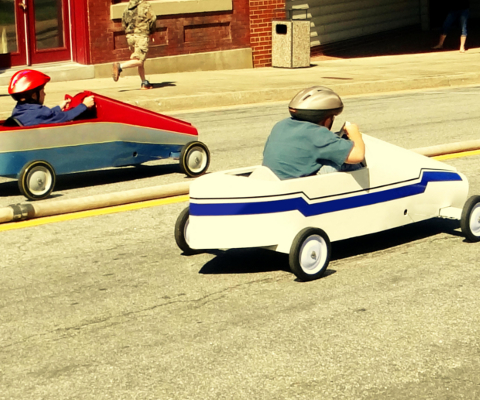
Second gear: start hazard awareness early
The current UK driving education is great preparation getting on the road - but it comes a bit too late. As we know children are picking up on how to drive when they're very young, influenced by their parents' behaviour, it makes sense to start one of the most important aspects - hazard perception - early.
Would you pass your theory and practical tests now?
It's hard. For a start, the theory test has probably changed since you took it - if you even did! The separate written test was only introduced in 1996, and hazard perception didn't come in until 2002.
It's not until your child starts revising their theory test questions and doing hazard perception videos that you realise how difficult it is - as it should be. Giving them a head start by using online software means they'll find it easier and have a deeper understanding of road safety.
How we process danger on the road
Passing the driving practical test relies heavily on top-notch observation and hazard awareness.
The frontal lobe - the brain's risk centre - isn't fully developed until the age of 25, so this stuff doesn't come naturally and takes a lot of practice.
Six months of lessons, most of which will happen in the same driving conditions, isn't enough. And it comes way too late.

What happened when we challenged 2 older drivers to a retake
Epic fail
These 2 drivers, both with more than 20 years on the road under their seatbelts, failed their theory questions, hazard perception and practical parts of their driving test. They also got a lot of road awareness questions wrong in our extra quiz.
If drivers who have decades of experience and a good track record of safe driving can't meet what the government says is the minimum standard for driving alone, how can we expect a 17-year-old to do better?
What it says about how we train younger drivers
Both drivers said they relied on their instinct a lot to deal with immediate hazards. A young driver doesn't have quick enough reactions to do that yet, which is why we talk about 'potential' hazards: being aware of something that could turn into a dangerous situation.
That could be a dog off its lead on the pavement, or a school sign - anything that signals there could be something to deal with soon.
As we gain experience on the road, we lay down neural pathways that let us react instinctively. But until we've experienced driving in the dark, driving on ice or any other hazard, we can't act without having to plan.
To get a new driver through the period of their driving life when they don't react instinctively to danger, they need more brain training. With biology against them when it comes to risk and consequence planning, something has to bridge the gap between 17 and 25.
Drive iQ
The software we used to test our experienced drivers is called Drive iQ - something we've been championing for many years now. It's used in 1,300 schools across the UK to help under-17s get a head-start on hazard perception, the lack of which causes most crashes.

But we want more. The schools that have adopted Drive iQ all agree: it's the absolute best thing they can do to prepare their students for driving. Every college in the country has had to deal with the tragedy of a young driver crashing. There is a way to stop that being inevitable.
"All of the students stated that it would make them think more carefully about safety issues and that many accidents were not accidents at all but avoidable errors of judgment."Patrick Nugent
Director of Sixth Form at Broxbourne School









